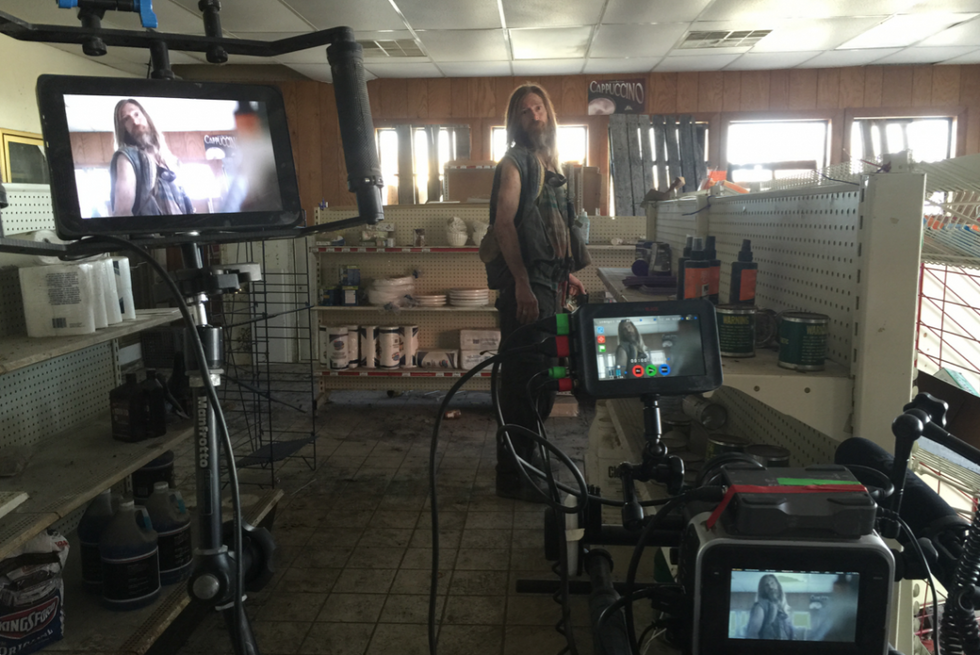Get Dirty with Guerrilla Film and 'The Driving Dead'
Guerrilla's series is a lesson in D.I.Y. and stretching small budgets to maximum effect.
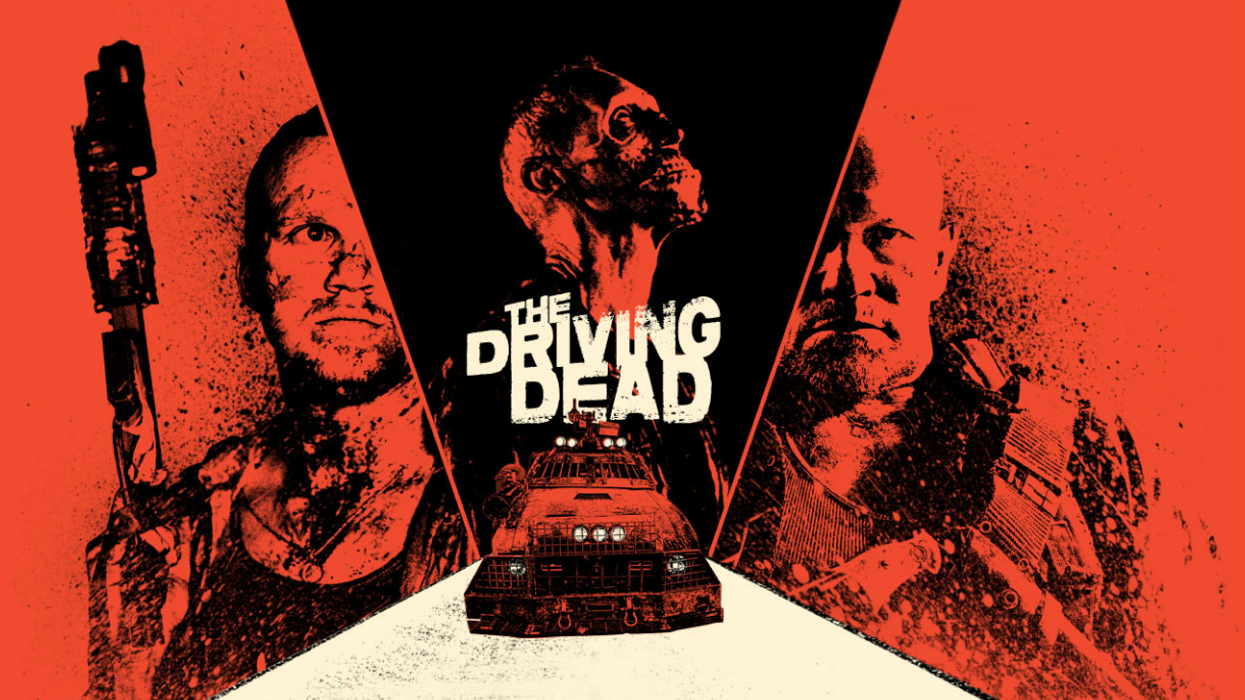
As independent filmmakers, we are often burdened with creating compelling content while under the constraint of small budgets, whether our own or a client's. But budgetary limitations can nurture creativity out of necessity. This was the case with Tennyson Tanner and Jonah Atkins of the production company Guerrilla Film, who helmed an unusual series of shorts for the Illinois Department of Transportation through their client, Arthur Agency.
Guerrilla fostered a working relationship with the client for six years, which led to landing a campaign that the client wanted executed on a grander scale. They pitched the concept of The Driving Dead, a series of videos visually influenced by zombie thriller The Walking Dead. The campaign was even lucky enough to secure Dead veteran Michael Rooker to star. The four episodes act as PSAs to highlight the importance of buckling up and driving sober. The project called for high-budget effects like explosions and tons of complicated stunt car shots, but the Guerrilla filmmakers only had a short web documentary budget to work with. The pieces stand as an object lesson of principles that we can utilize when faced against seemingly insurmountable restrictions, whether budgetary or otherwise.
As the videos attest, the Guerrilla team, who had mostly focused on 30-second commercials, stretched the campaign's modest budget to its limit. It was shot with a shoestring crew of three to six people, not including talent. Blackmagic cameras allowed the filmmakers to be nimble in close quarters like bathrooms.
Tanner explains. "The episodic budgets were about what we'd shoot for a multi-day, 3-5 minute documentary piece, except it was much longer. It wasn't completely run and gun. A lot of time needed to be assigned in advance." This included taking time in pre-production to build camera cars, since the filmmakers were unable to afford rental stunt cars and utilize expensive sets. Building the cars and finding real life sets proved much more economical.
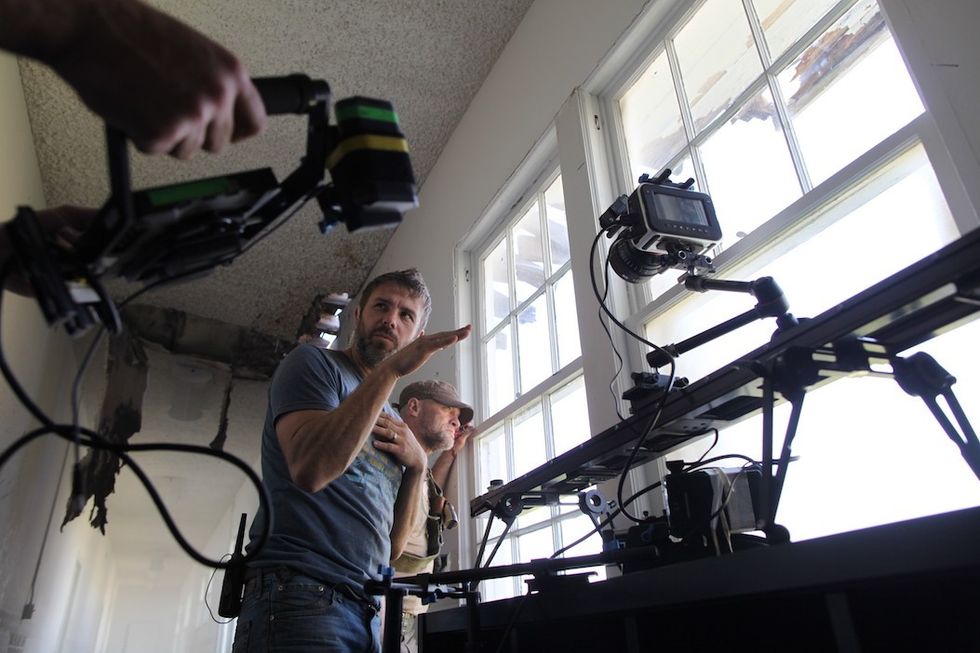
To get around the issue of expensive sets, their client gained access to a college automotive department slated for demolition. The administration gave the agency permission to do what they wanted with the location, allowing them to sledgehammer holes in walls, drive cars through the sides of buildings, and flip cars near a gas station. It's situations like this that makes The Guerrilla team advocates of shooting in small towns, where locals will be enthusiastic about film productions, and the locations and permits come cheap or free.
"We built a lot for The Driving Dead, like a crane we could lower from the ceiling to obtain zoom shots."
Building things comes second nature to Tanner, who grew up building stuff with his dad. For The Driving Dead, the Guerrilla team often improvised and adapted while on set to make things happen. "We built a lot for The Driving Dead, like a crane we could lower from the ceiling to obtain zoom shots." Tanner and Atkins bought four slides from slide-out cabinet drawers to create a mechanism that could lower and raise the camera from the ceiling. "It's basically a pulley system. We made it the night before the shoot, which was kind of crazy. We thought of a number of things the night before, like building upright arms for the camera car so we could move the camera up and down. The most effective thing we did was taking those arms and putting them on an angle using some bungie cords with the Ronin to make it even smoother."
"We needed legitimate chases without looking like we just set the camera up on sticks, or had someone running alongside the road or out of the back of a truck."
A homemade dolly Tanner has been using for nearly a decade was modeled off a design using go-cart wheels. "We used the doorway dolly with a Kessler jib and lowered it to the ground, turned the camera upside down and used our pull focus to dolly up to Michael's face. In 2.5K we were able to stabilize it, giving the footage that nice Fincher-like smoothness later."
The biggest necessities for the project were the automobile constructions. "We wanted to be doing more car stuff, and the budget couldn't afford a pursuit vehicle. The Driving Dead needed legitimate chases without looking like we just set the camera up on sticks, or had someone running alongside the road or out of the back of a truck. We got some really dynamic shots where we're coming across hills and stuff where you could still keep it stable, which is something you couldn't do in a normal car with a Ronin attached."
Atkins describes the demands of the camera car they developed. "We needed to shoot safe car chases but also pivot 180 degrees. Our mode of shooting through the window beforehand was to mount Tennyson to the car with a climber’s harness and pin his knees into the side door while it was driven. His wife wasn't too happy about that. This led us to design and build a more aggressive camera car for shooting the chase scenes."
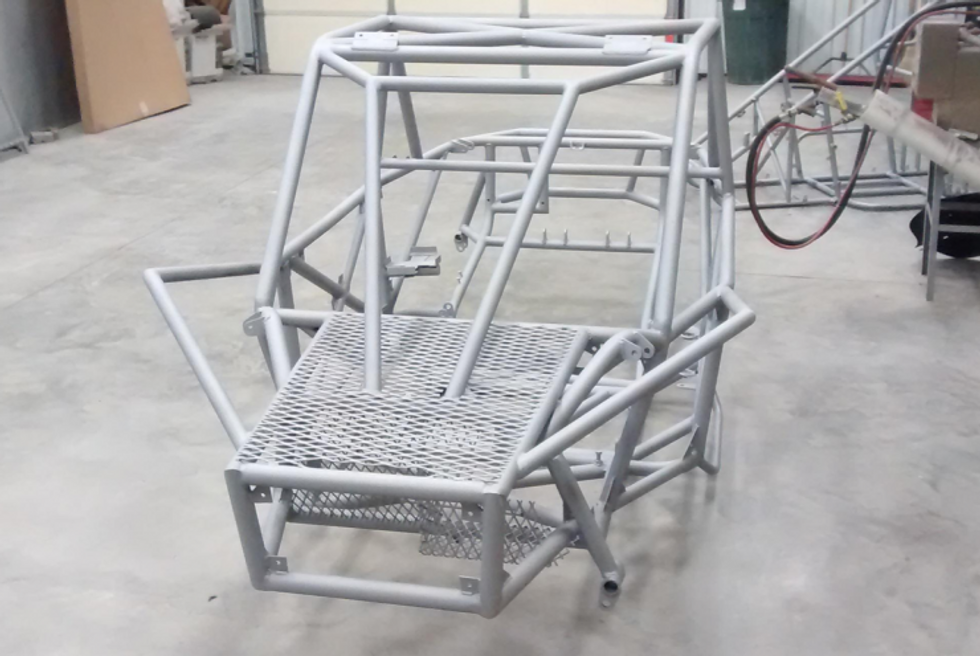
The car began with a modified Rock Crawler. "The Rock Crawler off-road vehicle already had a structurally sound cage which we modified both for aesthetics and functionality. The Crawler's got a Chevy truck frame and a Honda Civic engine, and you just put some huge wheels and shocks on so you can go as fast as you can off-road and up as steep of a hill or mountain as you want. The footage was pretty stable from the car, even without any post-stabilization. We were able to get pretty close to the action."
The camera car may look precarious, but Tanner and Atkins made sure to prioritize safety. Tanner says, "We made the seat able to be angled, and it straps you in super tight. It was safe and fun." The films capture the production value, with the camera car kicking up dust and pivoting on the rig for more dynamic shots.
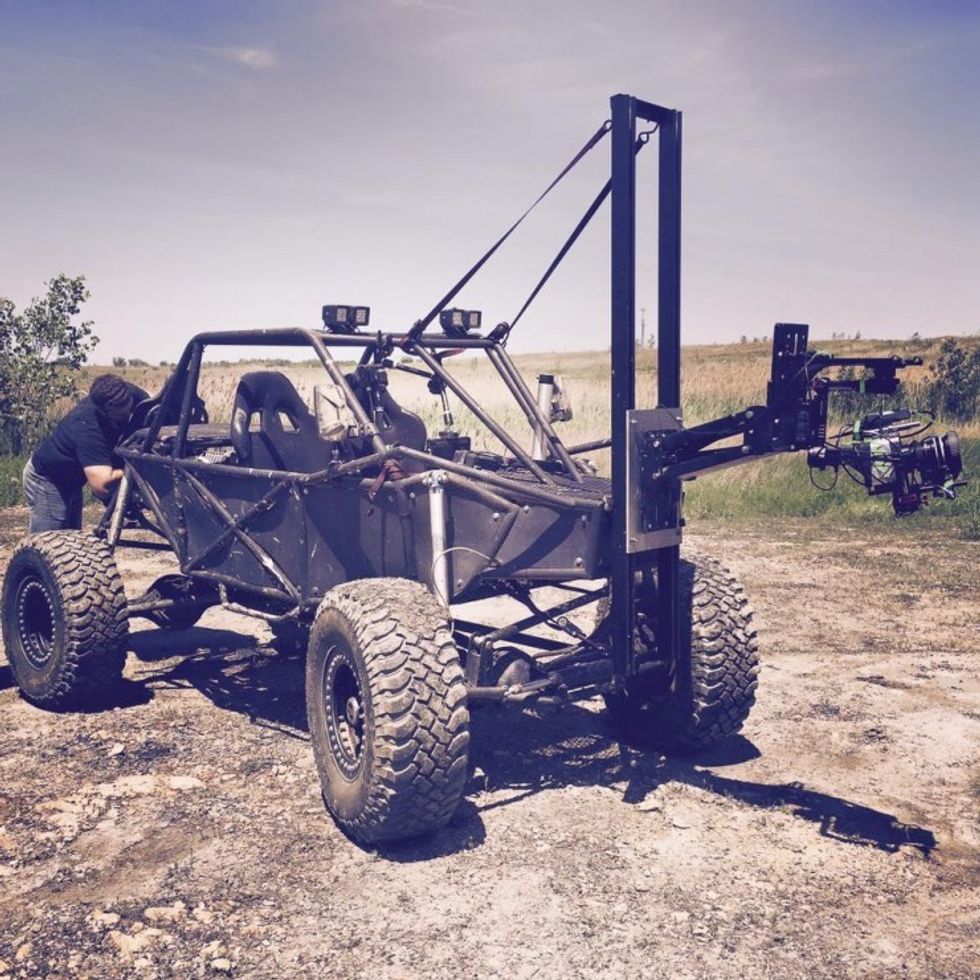
"You're not really hanging off," Atkins adds. "The racing seat has a five-point harness, and there's two-inch tubing all around the vehicle, so we can mount it on the front, back or side, and you can angle it to get your feet even higher and keep you safely in there."
Drones are the hot piece of gear these days, and Tennyson has messed around with those too. "We've had the Cinestar 8, which we've wrecked three times. Inspire's our main drone right now with the X-5 camera."
Guerrilla has just finished up a national ad campaign for Bad Boy Buggies and ATVs.
Follow Tristan on Twitter.
